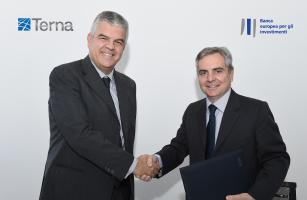PRESS RELEASE
21 July 2017
- 331,000 counterfeit euro banknotes were withdrawn from circulation in the first half of 2017
- Around 85% of the counterfeits were €20 and €50 banknotes
- All euro banknotes can be verified using the “feel, look and tilt” method
- Euro banknotes continue to be a trusted and safe means of payment
Some 331,000 counterfeit euro banknotes were withdrawn from circulation in the first half of 2017, a decrease compared with the second half of 2016. The likelihood of receiving a counterfeit is thus very slight. The number of counterfeits remains very low compared with the number of genuine banknotes in circulation, which has risen steadily, at rates above GDP growth, since they were introduced. In 2016, for instance, the number and value of euro banknotes in circulation grew by around 7.0% and 3.9% respectively. There are now over 20 billion euro banknotes in circulation, with a total value of more than €1.1 trillion.
The half-yearly trend is shown below:
|
Period
|
2014/1
|
2014/2
|
2015/1
|
2015/2
|
2016/1
|
2016/2
|
2017/1
|
|
Number of counterfeits
|
331,000
|
507,000
|
454,000
|
445,000
|
331,000
|
353,000
|
331,000
|
Breakdown by denomination:
|
Denomination
|
€5
|
€10
|
€20
|
€50
|
€100
|
€200
|
€500
|
|
Percentage breakdown
|
1.0%
|
2.4%
|
36.9%
|
47.6%
|
9.0%
|
1.6%
|
1.5%
|
During the first half of 2017:
- the €20 and €50 notes continued to be the most counterfeited banknotes. Together, they accounted for 85% of the counterfeits;
- most of the counterfeits (96.7%) were found in euro area countries. Around 2.3% were found in EU Member States outside the euro area and 1.0% were found in other parts of the world.
Check your banknotes!
Ever since the first series of euro banknotes was issued, the Eurosystem – i.e. the ECB and the 19 national central banks of the euro area – has encouraged people to be vigilant when receiving banknotes. You can check your notes by using the simple “feel, look and tilt” method described in “The €uro” section of the ECB’s website and on the websites of the national central banks. If you receive a suspect banknote, compare it directly with one you know is genuine. If your suspicions are confirmed, please contact the police or – depending on national practice – your national central bank or your own bank. The Eurosystem supports the law enforcement agencies in their fight against currency counterfeiting.
The Eurosystem communicates in various ways to help people distinguish between genuine and counterfeit notes, as well as to help professional cash handlers ensure that banknote-handling and processing machines can reliably identify and withdraw counterfeits from circulation.
The Eurosystem has a duty to safeguard the integrity of the euro banknotes and continue improving banknote technology. The second series of banknotes – the Europa series – is even more secure and is helping to maintain public confidence in the currency.
The new €50 banknote, with its innovative security features, was launched on 4 April 2017. Banknote equipment manufacturers and other suppliers will continue to receive support from the Eurosystem in adapting their machines and authentication devices to the new banknote. If their equipment is still unable to accept this banknote, operators/owners should contact their suppliers or manufacturers without delay.
For media queries, please contact Eszter Miltényi-Torstensson, tel.: +49 69 1344 8034.
